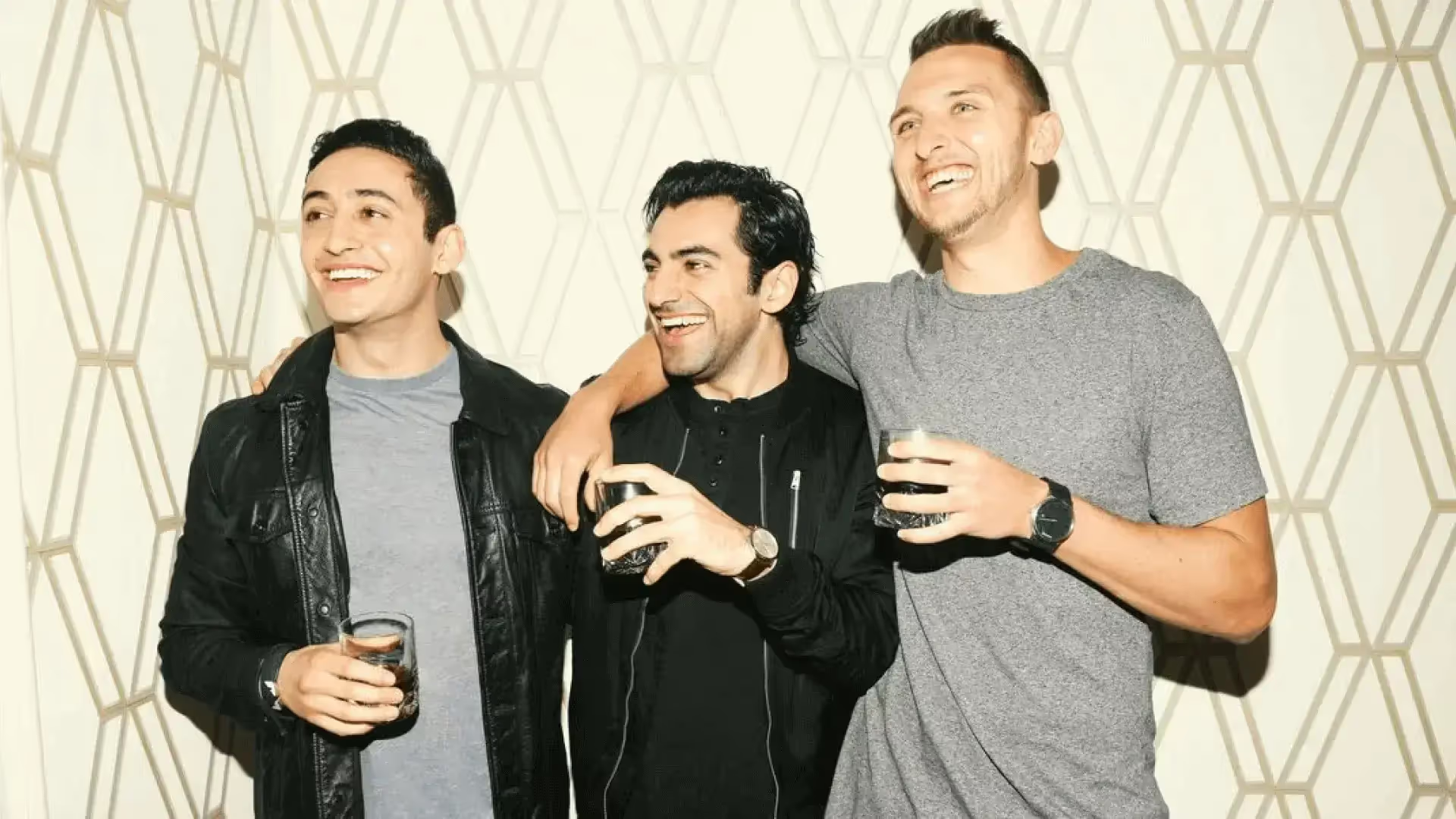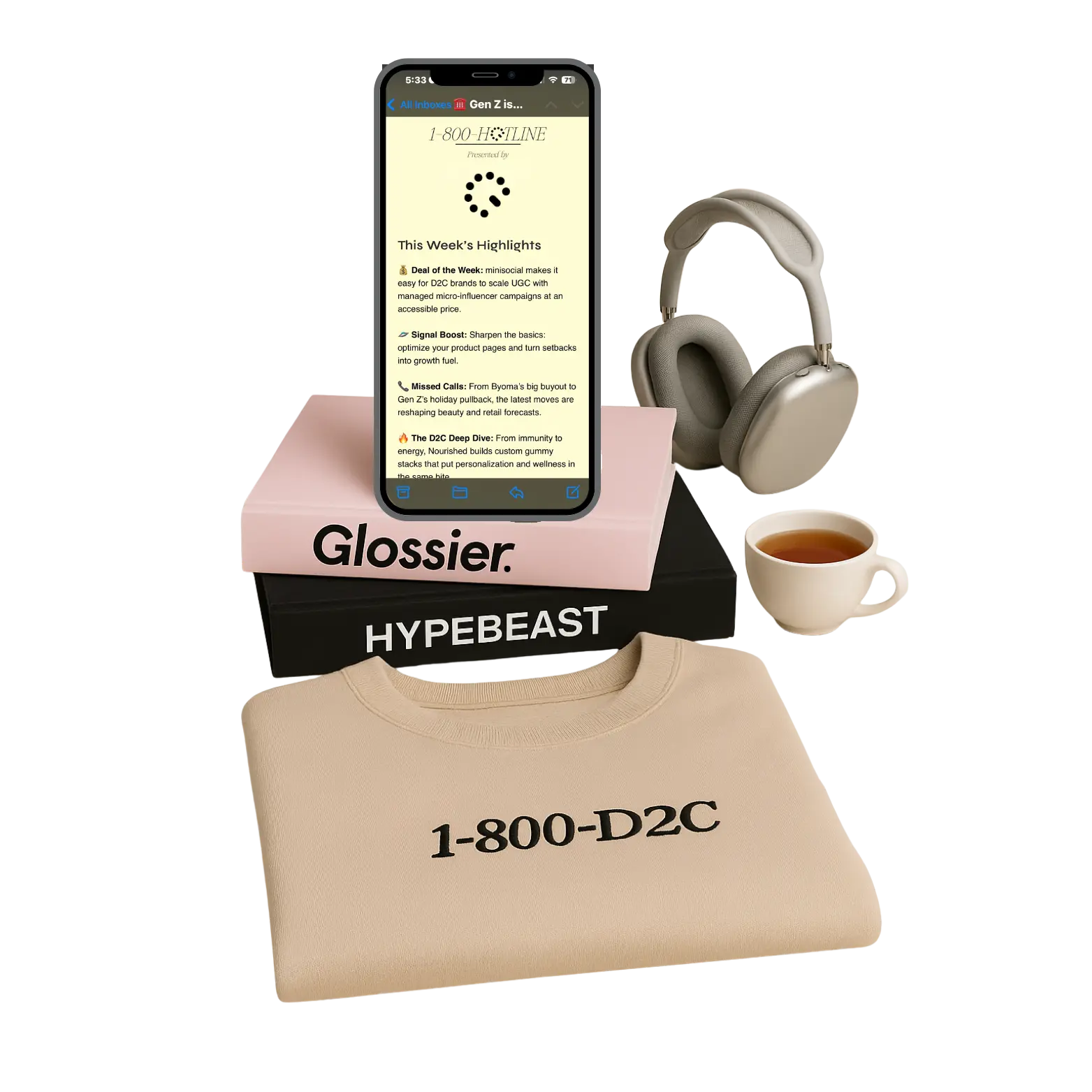
Welcome Amin! Tell us about what you’re building:
BOMANI was created out of a need for Sam, Kai and myself. The story goes, the 3 of us were living in California - we were all born and raised here and went to college out here. Sam and Kai met on a beach in Ibiza the summer before moving to New York. Sam had fully planned on moving to New York and Kai had no plans of doing so. In 8 days, Sam convinced Kai to drop everything he was doing in San Francisco and move to New York. I then met them a couple months later at a party. We shared really close friend networks, we grew up in California and had the same interests. The 3 of us were working 100 hour + weeks and we’d come home on Friday night and as we were pulling off our ties we would make drinks out of espresso or cold brew to wake ourselves up before going out. When we were eventually out in a bar or club, we’d drink espresso martinis.
Our friends were experiencing the same frustration: “I really wish there was a better way to combine alcohol and caffeine”. And that’s what we set out to do. We wanted to create something healthier, tastier and more convenient.
In its final form, BOMANI 5.7% alcohol (just a little bit more than a hard seltzer) and about as much caffeine as half a cup of coffee per can. It’s got 110 calories, no carbs, no sugar, no artificial sweeteners. It’s gluten-free, dairy-free, vegan, kosher, non-GMO and keto friendly. We only use 100% ethically sourced arabica bean cold brew coffee and we blend it with the same type of base alcohol that goes in popular hard seltzers like White Claw, Truly etc: It’s called “Sugar Brew” and Sugar Brew is just fermented sugarcane, it’s not distilled, and makes for a great base alcohol - for RTD’s in particular.
We quit our jobs in 2019. The specific day was February 1st when my bonus hit my account. We spent the whole year building the infrastructure for the business.
We ran into a lot of roadblocks. We found the smaller breweries were not interested in working with us, they didn’t see the opportunity to scale.
They would scoff at making an alcohol that doesn’t smell, taste or look like anything and wish me good luck.
So we had to find a way to break in with the bigger guys which was counterintuitive to us. But the bigger guys were way more interested in jumping into uncharted territory which was great because that gave us protection to scale.
We iterated on the product about 80-90 times before landing on the final one. We needed it to be perfect. We had the branding down, we knew there was market appetite - but it had to taste great. We completed an angel round in 2019. After that, we launched... 2 weeks before covid hit in 2020. We had no idea what we were in for. We had a plan built around getting consumers to experience BOMANI first before attacking the retail chains. That was the initial plan, which obviously totally didn’t go as intended.
We had no idea what we were going to do… but we pivoted. The pivot was two-fold. First was figuring out a direct-to-consumer model for our product. The second step was really understanding chain retail distribution. We recognized that consumers weren’t going to the independent liquor stores and convenience stores. They were going to the big chains because they felt safe there. Kroger, Safeway, Costco all had very good protocols in place on keeping their customers safe.
But it’s hard to break into those chains and even harder when everyone’s going towards that door. I’m thankful to say that we went from 200 retailers to over 1000 retailers in 11 months. We’re now working with the biggest chains and there are more coming.
And we invested heavily in D2C, it’s the way of the future. If you don’t have that built-in, you’re already at a disadvantage. It allows you to test your product, understand who your consumer is, who your audience is. More and more I’m seeing alcohol brands launch with a D2C only approach before switching over to retail which is brilliant - if done the right way. With D2C - we can ship to 33 states which is awesome because we can have a very national strategy with that.
The growth was based on the product and storytelling. For one, we weren’t going into buyer meetings and saying “hey - we’re the next hard seltzer / here’s the next IPA / here’s the next hard kombucha”. We weren’t coming in talking about a saturated market.
What we’re doing is unlocking incremental sales for the retailer, which is what they’re most looking for.
Buyers want a product that’s going to bring in a new category of consumer or increase the basket size of their existing consumers. What’s cool about BOMANI is that due to the fact that we have caffeine in our beverage, consumers are actually buying BOMANI in addition to their other products. We’re not going to take up much space, we’ll drive incremental value, we’re not competing with other products.
We also have an amazing team around us. Our corporate strategy director was the COO of Monster Energy and the President of Labatt USA - so he knows distribution and retail inside and out which is something we didn’t know. He was the one who really helped us align our strategy and goals.
We’re not Anheuser Busch, we’re not Miller Coors or Diageo. We can’t just throw a celebrity on a brand and pump it up. Just look at what Cacti is doing with Travis Scott - it’s crazy!
So we look for stores with a great target demographic, near other high quality stores, with deep market saturation and in a high affluence area - we check all of these boxes and we create a list of stores on which we’ll focus on. Within these stores, we’re gonna make sure we’re always building relationships with the owners, we’re gonna put up as much branding and advertising around it as we can. If I can get into a bar, restaurant or a golf course around there, that will help with sales and awareness.
We also have a great team of sales managers to help us. We’ve got someone in New York, Southern California, Northern California and are in the process of hiring someone for Arizona and later Nevada. Those numbers will grow, because they’re hugely valuable to our operation.
That’s been the tough piece for us to crack. Our D2C team that manages our backend and all things digital is incredible. It’s a team of 2 with outsourced help that’s worked with amazing brands previously. They’ve helped us figure everything out. Our old site was heinous, but the new site is really nice, it’s aesthetic, the flow is good. We can always improve but we have a solid foundation.
We’re really a retail first brand because that’s where the volume is in alcohol. So we view D2C as a brand awareness tool. As many eyes as we can get on our site, and as many people as we can reach prior to walking into a store, the better. We would still be investing in online even if we couldn’t sell online, but the fact we can sell online now and sell to states where we don’t even have a retail presence - We can create a fanbase before even launching in a state. I can’t just go out and pay Rihanna to post about BOMANI, but what I can do is be very strategic with who we’re targeting with our ads.
You have to get creative and you have to be on top of it. For example, Google remarketing isn’t allowed for alcohol brands, but you can use Criteo to do it. When you look at areas of growth like Tik Tok - the average age has shot up from 17-18 to closer to 30 in the past year. So now the LDA (Legal Drink Age) is higher than 21 and it has recently becomes a viable platform. Tik Tok is also putting age gates and realizing there’s opportunity for other advertisers to come in. Right now, if you’re an alcohol brand you can have organic content on the platform but you can’t run paid ads. In alcohol there’s always hoops to jump through and we need to be extra careful with our messaging.
Right now we’re activating Amazon Fresh because we’re stocked in WholeFoods. There’s a likelihood that Amazon will do a lot more with alcohol. We’re keeping our finger on the pulse for that. But we’re now focusing on how we can optimize Amazon Fresh, Drizly, GoPuff.
Discover new D2C brands, new eCommerce tools and read in-depth founder reviews each week.
